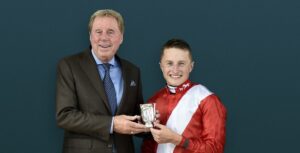There have been regular occasions throughout Darley’s history when its roster has shone brightly. When Sheikh Mohammed purchased Dalham Hall Stud as a going concern in late 1981 from Major Jim Philipps, the Newmarket property came with Great Nephew, then on the cusp of landing that year’s sires’ championship off the back of Shergar. An early signal of intent from its new custodian arrived not long after in 1984 with the retirement of Irish Derby winner Shareef Dancer, then valued at $40 million, and while he ultimately fell short of expectations at stud, others such as Machiavellian, Singspiel, New Approach and In The Wings, the first stallion to stand under the Darley umbrella at Kildangan Stud in Ireland, did not, in some cases doing enough to shape the breed in some form or another.
Of course, it’s a case of what might have been had Dubai Millennium not succumbed to grass sickness after a single covering season in 2001. As it is, a line once hanging by a thread is now flourishing thanks to Dubawi, whose emergence as one of the world’s most important stallions has run in tandem with the consistent excellence of the late Kildangan Stud-based sire Shamardal.
Yet for all its past successes, the Darley stallion operation enters the 2024 season on arguably a stronger footing than ever before. Dubawi turns 22 as the world’s joint most expensive stallion at £350,000 in recognition of a stud career that consists of 57 Group or Grade 1 winners as well as an increasingly important collection of sire sons. That list includes Darley’s Night Of Thunder, who leads the Kildangan roster on €100,000, and Too Darn Hot, whose impressive debut crop is now being complemented by a similarly eye-catching start in Australia.
Watching Blue Point and Too Darn Hot has been an absolute pleasure, a joy
However, while Too Darn Hot’s early success, highlighted by the Moyglare Stud Stakes winner Fallen Angel, places him in rarefied company, by the figures he is in the shadow of Kildangan’s Blue Point, who ended 2023 as the champion first-crop sire by winners and earnings in both Britain and Ireland and Europe. Not since Sadler’s Wells 35 years ago has a sire thrown two Group 1 winners in his first crop and Blue Point’s achievement in doing so via Big Evs and Rosallion provides further impetus to Shamardal’s legacy, something for which Lope De Vega originally set the tone. That in itself is good news for the number of supporters behind his other Group 1-winning sons Pinatubo and Earthlight, both of whom have a weight of expectation on them ahead of their first runners this season. Not to be outdone, Dubawi’s hand could also strengthen yet further through Ghaiyyath.
“This is the strongest roster we’ve had by a country mile,” says Sam Bullard, Darley’s Director of Stallions. “We’ve had horses vying for number one before but not two first-crop sires who are so well clear of the others. Watching Blue Point and Too Darn Hot has been an absolute pleasure, a joy.
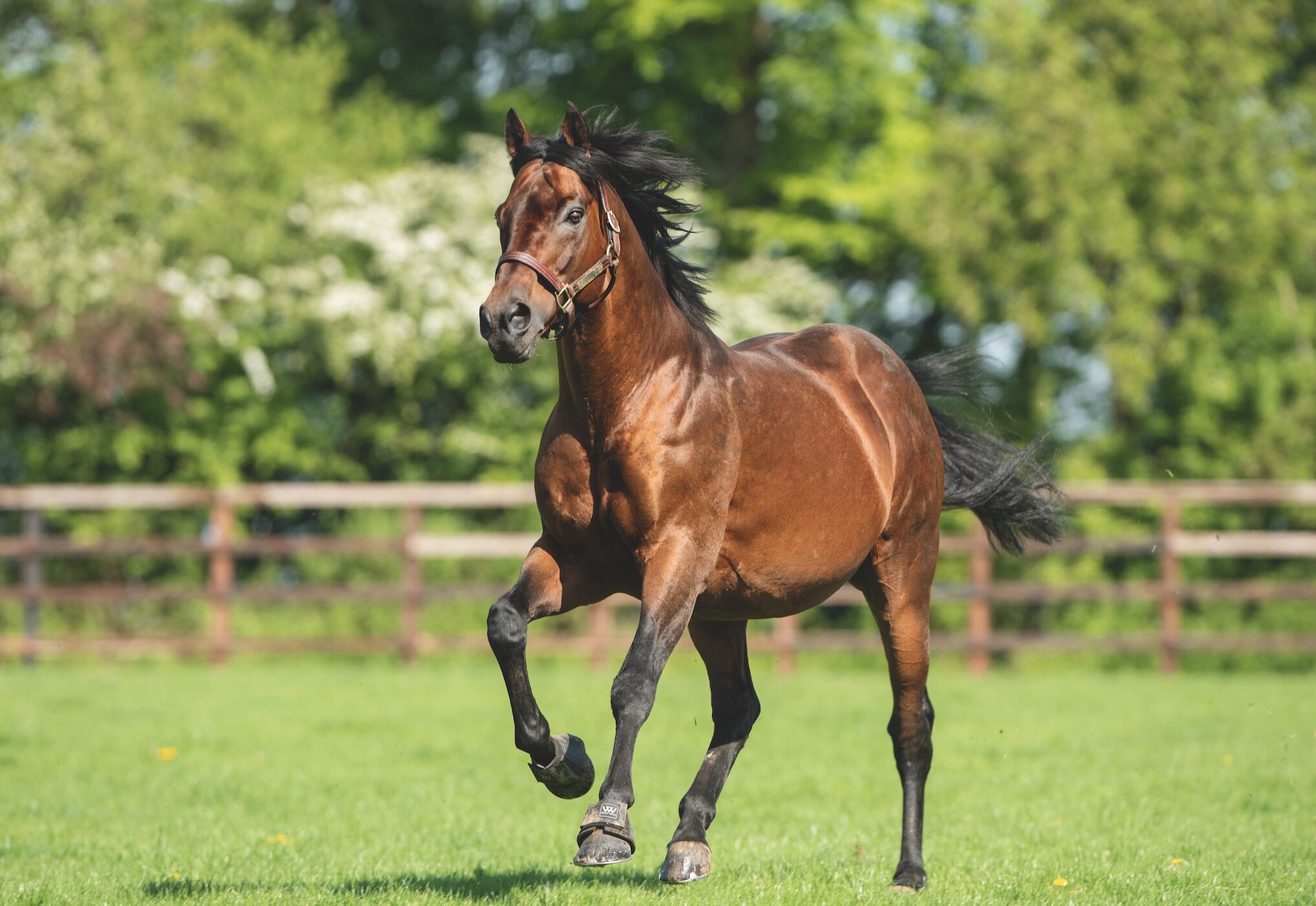
Dubawi: ‘There’s no doubt that the market was in two minds as to whether he was going to be a success’. Photo – Darley
“There’s always been excitement on the roster but this is the strongest place it’s ever been in. Part of it is that we have a racing operation that is working very well. We’ve never had more exciting horses retire to stud and we’ve also got the strongest group of mares that we’ve had for a long time.”
The catalyst, of course, has been Dubawi. A constant flow of his progeny into Godolphin has allowed the operation, in particular Charlie Appleby, to cultivate an understanding of the line that has undoubtedly been influential in them campaigning 22 of his top-level winners. More recently, he has become a go-to stallion for the Coolmore partners, a move that yielded the high-class fillies Emily Dickinson and Never Ending Story ahead of last year’s National Stakes winner Henry Longfellow. The latter, a son of champion Minding, is regarded in some quarters as a colt capable of threatening City Of Troy’s supremacy. Yet similar could also be said of Godolphin’s expensive Dubawi colt Ancient Wisdom, who signed off his juvenile campaign with a victory in the Futurity Trophy at Doncaster. Enough has been seen of the pair to suspect that one or the other might ultimately be up to winning the Derby, thereby rectifying one of the few omissions on Dubawi’s stud record.
Dubawi might have been one of fewer than 50 foals left behind by Dubai Millennium, and a Classic-winning son at that, but it has become part of racing and breeding folklore how launching the horse’s stud career wasn’t plain sailing, even with the firepower of Godolphin and Darley behind him.
“There’s no doubt that the market was in two minds as to whether he was going to be a success,” says Bullard. “We sent him to Ireland in his third year in order to access a new market to attract support. To be honest, that was only a partial success and when he came back to Newmarket, he stood for £15,000. But by the end of that year [2009], his first crop was starting to run and he did the rest.”
A turning point arrived that season at Doncaster’s St Leger meeting when Sand Vixen and Poet’s Voice won the Flying Childers and Champagne Stakes within a day of each other. But better was to come.
“When Makfi won the Guineas the following spring, that was really when everyone got excited,” says Bullard. “By the end of it, that crop had produced more Group winners than any sired before by a first-crop stallion. Makfi was the standout but there was also Poet’s Voice, who won the Queen Elizabeth II Stakes, and the Dubai World Cup winners Prince Bishop and Monterosso.
“It was absolutely clear by that stage that they were easy horses who loved their work – they ate, they slept and they worked. And when they went to a race, they got their heads down. He has taught me personally like no other horse how much of it is what you can’t see between the ears – that’s what stands him apart.”
There were 47 foals in that one crop by Dubai Millennium
That kind of mindset has naturally stood Dubawi in good stead since, helping him to reignite a line that became perilously close to disappearing altogether.
“There were 47 foals in that one crop by Dubai Millennium,” says Bullard, alluding to the early death of Godolphin’s Dubai World Cup and Prince Of Wales’s Stakes winner, one of the best left behind by the Mr Prospector horse Seeking The Gold. “Dubawi and Echo of Light were the two stallions. Echo Of Light died in a paddock accident before he had a chance to get really going. So Dubawi was the sole survivor. That line was hanging by the thinnest of threads and he’s taken best advantage of it. Then the joy is seeing his sons do it and obviously Night Of Thunder leads the way – he was never the most gorgeous individual but he has the most fantastic attitude to life and judging by his yearling average of recent years [yearlings have averaged close to 200,000gns in both 2022 and 2023 and sold for up to 660,000gns last year], you can see that he obviously breeds quite a good looking individual.”
Bullard adds: “A common lie I hear about Dubawi is that ‘I’ve got a typical Dubawi’ because there’s no such thing. Take Poet’s Voice as an example – he was a taller type, not butty or thick set. A horse like Ghaiyyath is very much like that as well. They can be bay, they can be chestnut. Modern Games, for example, is a gorgeous, bright chestnut. He didn’t miss any fights, obviously won the Breeders’ Cup Juvenile and then travelled all over as a three-year-old – it’s back to that Dubawi attitude.
“One of the fun aspects to Dubawi is they’re so versatile. You have a St Leger winner in Eldar Eldarov, a very good stayer last year, alongside the good two-year-olds. Modern Games was obviously a champion miler for Charlie [Appleby], who also had Ghaiyyath and Space Blues. When they come into the yard, he and the jockeys must work out what they are going to be and that must be fun.”
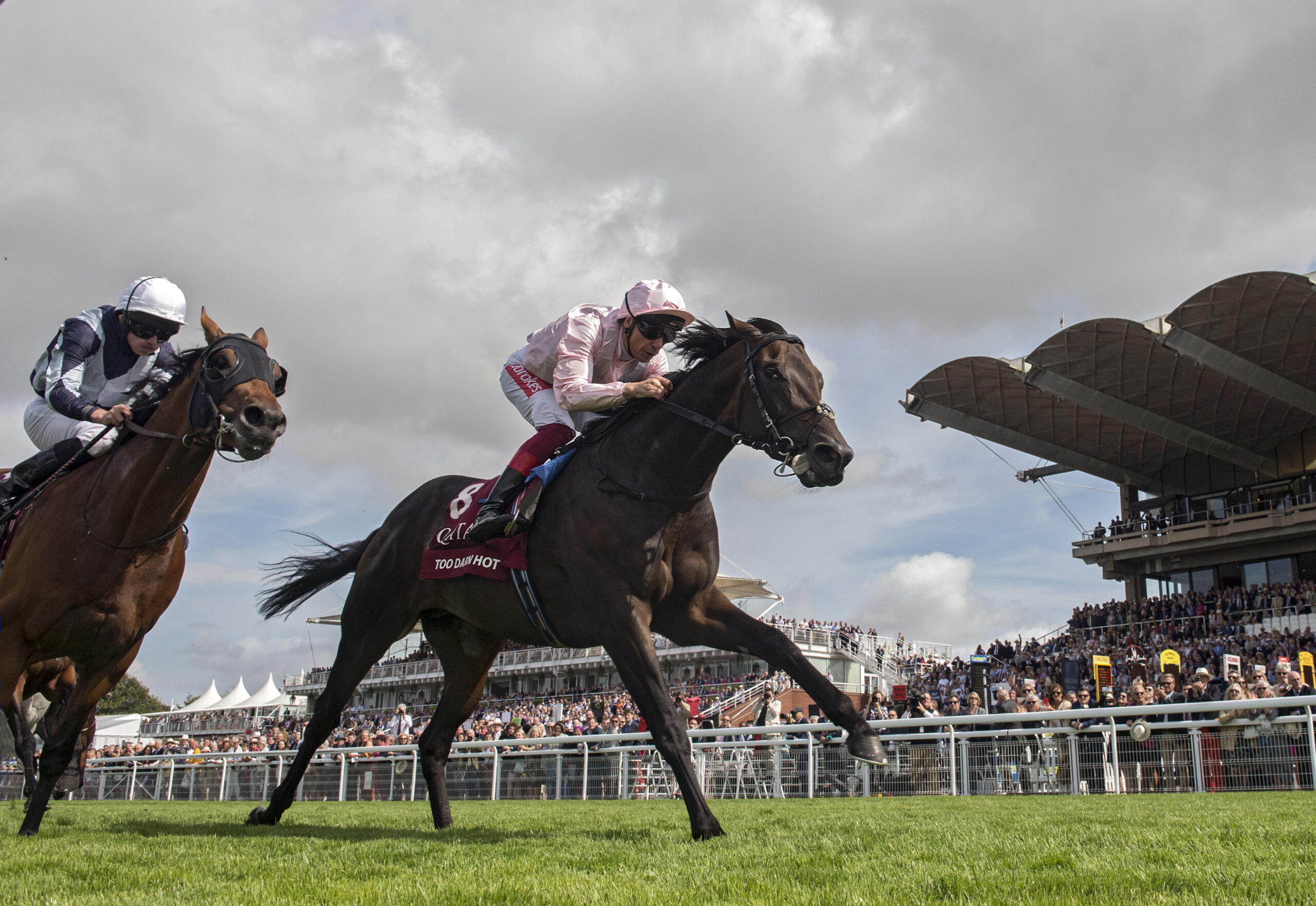
Too Darn Hot: has made a rapid start at stud. Photo – George Selwyn
The 22-year-old is reported to be in ‘great fettle’ as he approaches his 19th covering season. Of his 137-strong book in 2023, just over 60 belonged to either Godolphin or its associates, including Sheikh Mohammed Obaid al Maktoum. And of course at his fee of £350,000, he is very much the domain of elite breeders.
“His broodmare prowess is coming through,” says Bullard, alluding to the likes of Adayar, Homeless Songs, Mostahdaf and Without A Fight that sit at the head of Dubawi’s record as a damsire. “I think most of the big operations would love to have a nice filly by him so they’re wanting to send quality mares for perhaps that reason. And I hope we’ll see a bit of that over the next few years.”
Night Of Thunder sits among a wave of highly accomplished Dubawi sire sons that also includes Ballylinch Stud’s New Bay and the Aga Khan’s Zarak, one of the most upwardly mobile stallions currently standing in France. Now throwing his name into the hat is Too Darn Hot, stood by Darley in conjunction with his breeder Watership Down Stud.
Hindsight is a wonderful thing and it’s easy to say now that Too Darn Hot’s profile was conducive to success. For starters, he was an excellent racehorse who was a three-time Group 1 winner and champion two-year-old. Then there is his pedigree; out of champion Dar Re Mi, he is a member of Watership Down Stud’s lynchpin family of Darara, herself a half-sister to leading sire Darshaan. The presence of Singspiel as his damsire adds another line of Sunbittern, also the fourth dam of Dubawi.
“He’s got the pedigree, an extraordinary race record and he’s a gorgeous looking horse,” says Bullard. “There’s a lot of Singspiel coming through in him, which I think has given him a lot of quality. Singspiel and [his sire] In The Wings were among the first really good horses we were able to work with at Darley and that’s a thrill because it goes back to very early days of Maktoum involvement, right back to High Hawk [the Group 1-winning dam of In The Wings] and her dam Sunbittern.
“Too Darn Hot has had huge support from the outset – quality mares from quality breeders. That never diminished. We’ve never had a horse fill up four years in a row like he has. Nowadays it nearly is always a struggle because year two is now what used to be year three. But with this horse, there’s been support throughout and from large owner breeders to traders.”
A number of talented two-year-olds have showcased the sire line to good effect over the years but it is also known how well its various representatives tend to progress given time. As Blue Point blasted out of the blocks last spring gathering the respect of the breeze-up community and trainers en route to securing first-crop sire championship honours, Too Darn Hot was ticking along. His first winner arrived in late May with the filly in question incidentally turning out to be Fallen Angel, subsequently winner of the Sweet Solera and Moyglare Stud Stakes. By the time that latter Group 1 event rolled around, other daughters Darnation and Caroline Reaper had struck at Group 3 level (Darnation would later win the May Hill Stakes) while in the following weeks, son Alyanaabi landed the Somerville Tattersall Stakes prior to finishing second in the Dewhurst.
When all was done and dusted, Too Darn Hot ended the year with six stakes horses. Only Blue Point could boast more, with his nine headed by the Breeders’ Cup Sprint Juvenile Turf hero Big Evs and Rosallion, successful in the Prix Jean-Luc Lagardere; Rosallion is a particularly important representative going forward as a 7f Group 1 winner who is likely to be a 2,000 Guineas candidate, therefore providing early proof of Blue Point’s capabilities to throw runners beyond sprint distances.
As for Too Darn Hot, he has also hit the ground running in Australia where at the time of writing his first crop includes the Group 3-placed Arabian Summer and Too Darn Lizzie, an emphatic winner of the Magic Millions The Debut. Her win capped a week on the Gold Coast during which a yearling colt also realised A$1.9 million at Magic Millions to trainer Ciaron Maher and David Redvers.
The aim is 150 but not more than 160
The promise of these young stallions does, however, present something of a problem, albeit a good one. Breeders are understandably queuing up to use both horses but against the backdrop of an operation that does its best to limit books.
“We’re determined not to cover too many, both for the benefit of the horse and those breeders who have got mares in foal,” says Bullard. “The aim is 150 but not more than 160. But I’m also a huge believer in taking stock of what the breeders have to think. Those who regularly breed horses, and good ones, well let’s use their brains.”
Amid the anticipation for what Blue Point and Too Darn Hot might go on to achieve, there is the satisfaction in that Dalham Hall also houses the young sire responsible for the world’s top-rated three-year-old of 2023. Cracksman, the first son of Frankel to stud, remains at a fee of £17,500 despite having thrown the unbeaten Arc and Prix du Jockey Club hero Ace Impact among his seven first-crop stakes winners.
“What is interesting with Cracksman is that he’s out of a Pivotal mare so there’s real speed in there,” says Bullard of Anthony Oppenheimer’s homebred who ran away with two editions of the QIPCO Champion Stakes. “We did a marketing campaign in 2022 with him where we highlighted that he was a C:C [the Plusvital Speed Gene Test designation for a horse who’s optimum racing distance is between 5f to a mile] as there were people already consigning him to the jumping ranks. He was an extremely good racehorse, he won the Champion Stakes by a wide margin two years in a row and Frankie [Dettori] never got off him – if he hadn’t thought he was very good, he wouldn’t have nailed his colours to the mast every time he ran. But if it’s a mile and quarter or more, then they want to consign them to the National Hunt box. It’s a real mistake. I think the incentives that the BHA and the TBA are putting on for the middle-distance horses now is all good but it still takes a long time to come through. You’re trying to change a mindset.”
He adds: “Cracksman has got a lot coming through, there are plenty of promising two-year-olds from last year to run for him. For whatever reason, he has suited French breeders very well. They certainly supported him and it’s been good to see them well rewarded.”
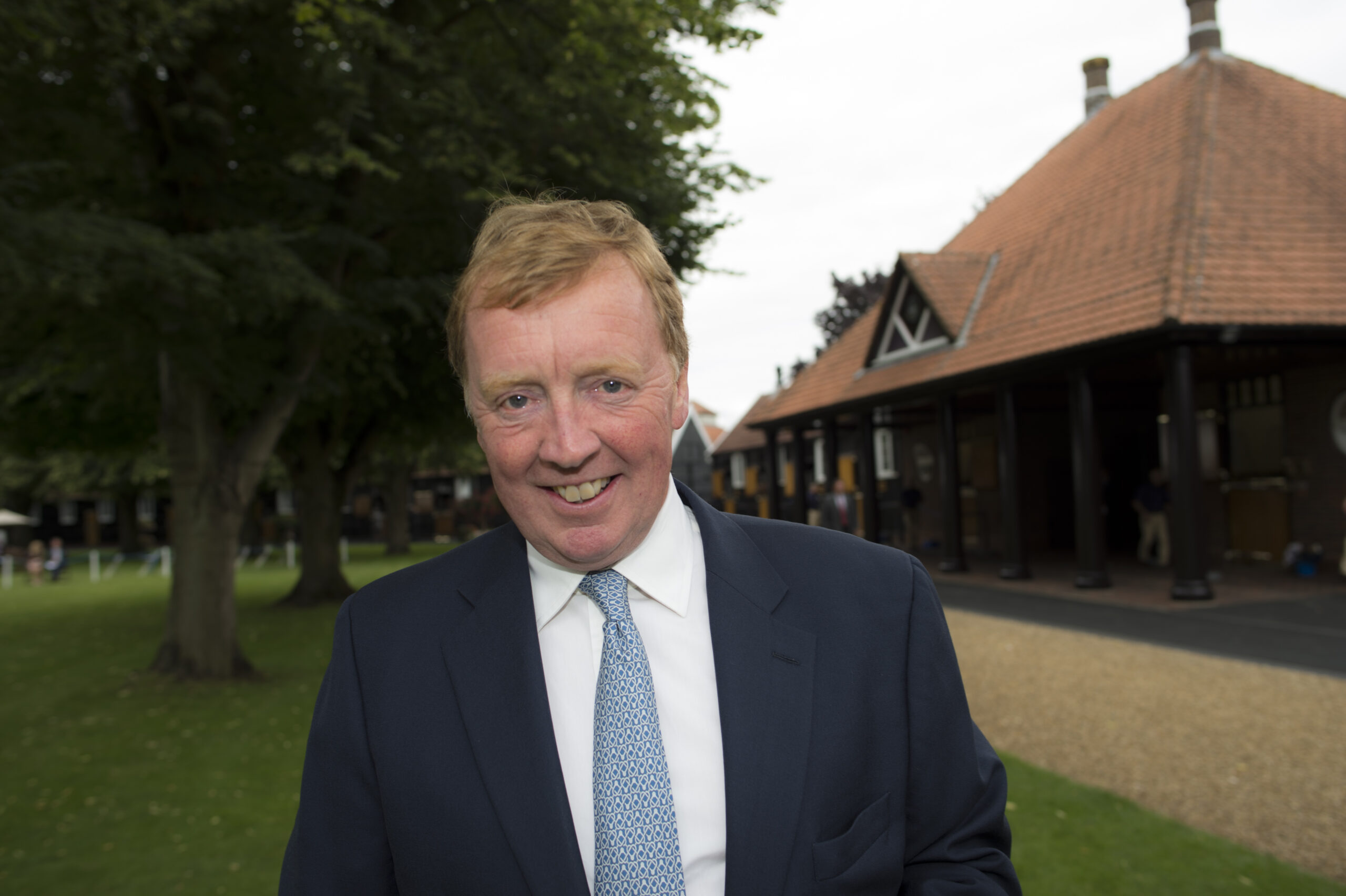
Sam Bullard: ‘We’re determined not to cover too many, both for the benefit of the horse and those breeders who have got mares in foal’. Photo – George Selwyn
Cracksman was one of 11 stallions on the 2024 British and Irish roster whose fee held steady from 2023. Only Blue Point and Too Darn Hot were raised, to €60,000 and £65,000 respectively.
“You’ve got to take breeders with you,” says Bullard. “Every time we’ve put them up too far or too soon, there’s been a bounce on the back of that. And once people start losing money, they will not come back. So you’ve got to take them with you. Dubawi was a Classic case – once he got going, it was a long time before he got to £100,000.”
It doesn’t take too much imagination to envisage the next chapters being written courtesy of Pinatubo, Earthlight or Ghaiyyath. Each caught the imagination with their first crops at last year’s yearling sales, as befits a trio of well-bred multiple Group 1 winners. One step beyond that generation with their first yearlings is champion miler Palace Pier, whose first foals sold for up to 200,000gns, and Space Blues, yet another highly talented son of Dubawi who – like Too Darn Hot – is inbred to the Sunbittern family. In France at Haras du Logis, breeders have the option of the Poule d’Essai des Poulains winner Victor Ludorum, one of the final sons of Shamardal to filter through the pipeline whose background contains two lines of the blue hen Helen Street.
Meanwhile, the first foals by Perfect Power, the Prix Morny and Middle Park Stakes winner who trained on to win the Commonwealth Cup at three, and Platinum Jubilee Stakes winner Naval Crown, another by Dubawi, are starting to hit the ground.
“Palace Pier is a champion miler by Kingman, so he has to be exciting,” says Bullard. “English breeders are under pressure as we know, but there are also some incredible opportunities out there for them in this country. And it’s not just us – you have Juddmonte, Whitsbury Manor, Tweenhills. There are some fantastic horses around. Perfect Power is an example. Like Blue Point, he was a very good sprinter. He was tough as old boots, he was extremely quick, he kept on running, he retired sound and physically he’s done very well since he’s retired to stud. He is a real opportunity to get the speed that English breeders seem to want.”
Don’t think for a minute though that the operation isn’t sensitive towards the challenges facing some British breeders, much of which came into sharper focus at last year’s breeding stock sales.
“The market is what it is and it’s undoubtedly a tricky time,” says Bullard. “We absolutely understand how hard it is for breeders.
“We should pay tribute to the Great British Bonus Scheme. It’s very important for that sector of the market and the TBA deserve a huge amount of credit for getting it through. It was a long time in the planning but it’s working. You can see that from the Karl Burkes, Kevin Ryans, Mark Johnstons, Richard Hannons of this world – they absolutely get it. Yes, the market is difficult but you can also help yourself by taking advantage of it.”
Invariably keen to look towards the future and the next new name, breeders have been swift to show their support towards Modern Games, whose book was quick to fill, as well as the Group 1-winning miler Triple Time and brilliant two-year-old Native Trail. Others, such as veteran Teofilo and the capable likes of Harry Angel and Territories, remain popular. Add in the potential of some of the younger horses and it is the kind of balanced yet successful roster that was likely envisaged to be one day in place when Dalham Hall was launched as the first Darley stallion property all those years ago.
“Godolphin is a very strong team from top to bottom,” says Bullard. “Liam O’Rourke [Director of Studs, Stallions & Breeding] and Jimmy Hyland [Stud Director at Kildangan Stud] do the matings for the European company and in 2022, when we had 31 Group 1 winners in the blue, 30 of them were homebreds – that’s very satisfying.
“Everyone works hard to do a fantastic job. The vets are extremely good, the transport team, everyone on the studs, the riders – we’re extremely lucky to be dealing with such good people. There’s no lack of desire or commitment from top to the bottom. Now everybody is enjoying some success. And no one else deserves it more than the principle.”
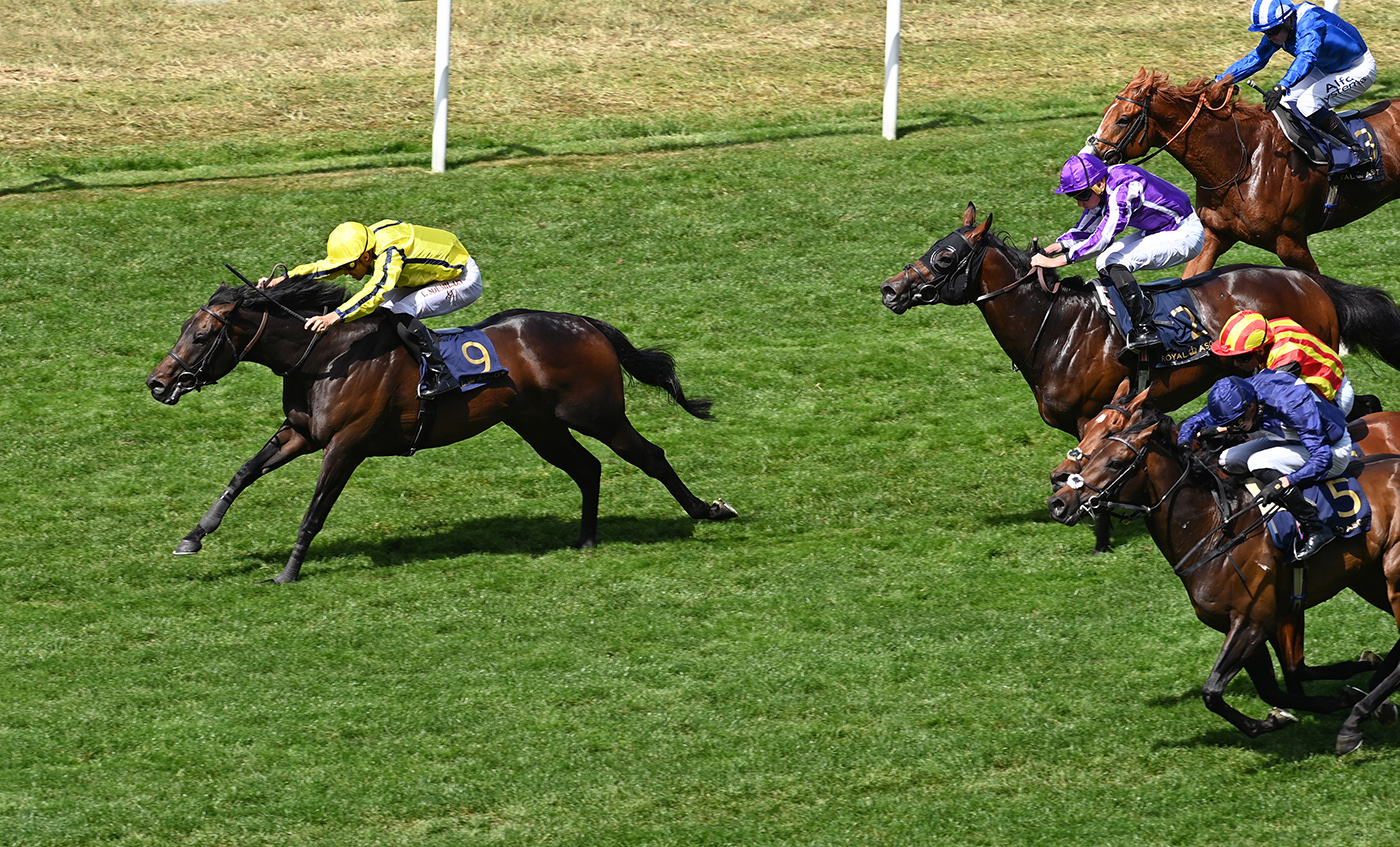
Perfect Power: ‘He was extremely quick, he kept on running and he retired sound’. Photo – Bill Selwyn



